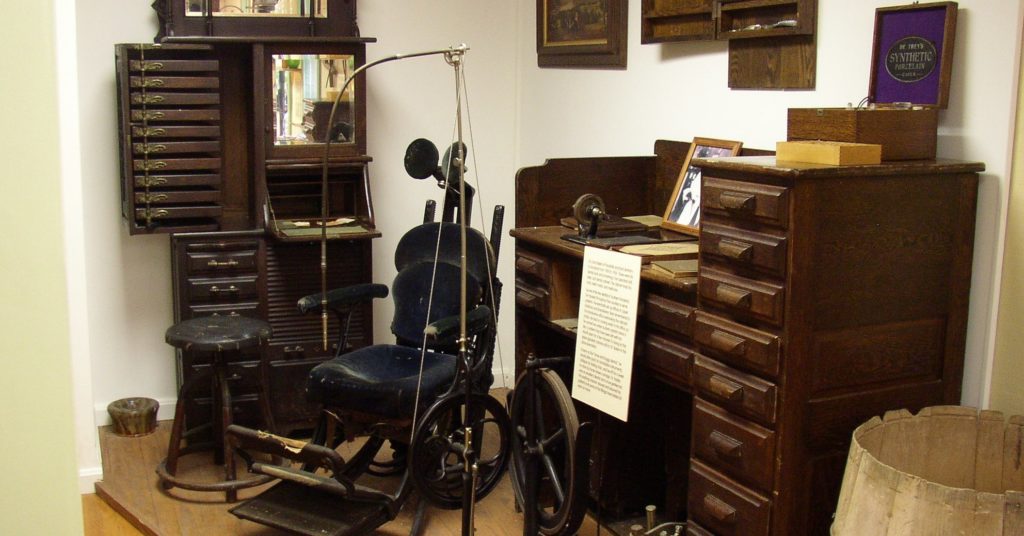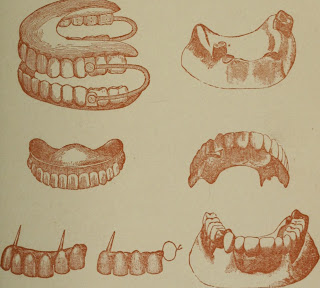
Most of the history books note that Josef Jakobs was a dentist by profession, which is quite true. But not the entire truth.
Let’s start with what Josef told MI5 during his interrogations in England in 1941. He claimed to have studied dentistry in Argentina in the early 1920s before returning to Berlin and completing his studies there. Although his story gets a bit fuzzy, he claimed that he was awarded a doctor of dentistry and, by 1926 was practising out of his father’s residence at Pfalzburger Strasse 13 in Berlin-Wilmersdorf.
Some of this information can be confirmed by an entry in the 1933-1934 Jahrbuch for Dentistik.

The entry reads:
Jakobs, José, W 15, Pfalzburger Straße 13. G 98 N27.
Born in 1898 (G 98) and registered as a business in 1927 (N27), Josef (José is the Spanish variant of Josef) was practising at his father’s address (Pfalzburger Straße 13) in Wilmersdorf (W15). The fact that Josef’s name is the Spanish variant lends some support to his claim to have studied in Argentina which is Spanish-speaking. Although, he could easily have learned dentistry in Mexico, Chile or Spain for that matter. Up until a few months ago, this was as far as I had been able to push my confirmation of his dentist story.
There is, however, another intriguing clue which I discovered recently in the Amtliches Fernsprechbuch für Berlin und Umgegend, 1929 (Official Telephone book for Berlin and Area, 1929).
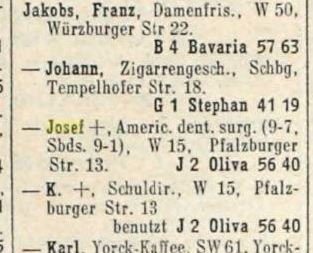
We have entries for Josef (highlighted in yellow) and his father Kaspar (the entry below Josef). For Josef, the entry reads:
Jakobs, Josef +, Americ. dent. surg. (9-7, Sbds. 9-1), W 15, Pfalzburger Str. 13. J2 Oliva 56 40.
From this, we know that Josef was working from his father’s residence at Pfalzburger Straße and that they shared the same phone number (J2 Oliva 56-40). In addition, Josef worked Monday to Friday from 9 am to 7 pm (quite a long workday) and on Saturdays from 9 am to 1 pm. The cross or plus sign behind his name (and that of Kaspar) simply means that they have more than one entry in the phone book. Given that this entry is in the resident’s list which are alphabetical by surname, the other entry is likely in the business section of the phone book.
Now, for the interesting part. Josef is listed as an “Americ. dent. surg.” which we can safely translate as American Dental/Dentist Surgeon/Surgery. Two possible explanations for this come to mind. On the one hand, this could mean that Josef had studied in the Americas. We need to keep in mind that, at the time, “America” did not mean the United States of America, but the entire “Americas” including North, Central and South America. I know that even today, my German relations still use the word “America” when referring to Canada. I constantly correct them – “No, it’s Canada” since, for us America generally means the United States of America. So, in this case, Josef’s entry could give some support to his story that he studied dentistry in the Americas and, since he claimed it was Argentina, that would fit.
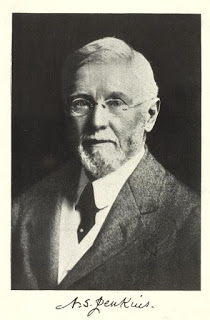
I shared the above entry with my expert in all things German (Traugott Vitz) who suggested a second possible explanation for “Americ. dent. surg.”. He noted that in the early 20th Century there was an American “school” of dentistry in Germany which used different methods than European or British dentistry.
Traugott shared a Wikipedia post about an American-born dentist, Newell Sill Jenkins (1840-1919) who practiced in Dresden between 1866 and 1909. Jenkins introduced the use of porcelain enamel for inlays, crowns and bridges. This allowed him to create tooth-coloured anterior fillings for the first time and Jenkins is generally considered to be the founding father of aesthetic or cosmetic dentistry. Another reference (Journal of the California Dental Association, 2003) noted that:
“Dr. Newell Sill Jenkins was one of the pioneer American dentists who took “American dentistry” to Europe. Among his patients were Composer Richard Wagner, and among his friends, Author Mark Twain. He treated some of the crown head of Europe, and yet found time to participate in organized dentistry and conduct research in cosmetic dentistry. He was the father of the porcelain revival in both Europe and America.”
It would appear that American dentistry was on the cutting edge of these sorts of improvements to dental care. And I almost get the sense that “Americ. dent. surg.”, as it relates to Josef, might refer to aesthetic or cosmetic dentistry.
I should also mention at this point that, at the time, Germany had two very distinct streams of dental education, that of the Zahnarzt (dentist in English), who studied at a university and received a degree, and that of the Dentist (also dentist in English), who received most of his training, except for one year, at dental laboratories or in the offices of other Dentists. By the early 1930s, however, the distinctions between the two began to blur for the Dentists could do virtually anything that the Zahnärzte could do except give injections and use anaesthesia. So a Dentist in Germany is not quite the same things as a Dentist in the Americas. Josef, to give him credit, never claimed to be a Zahnarzt, so he was most likely a Dentist and as such most of his practice likely involved the use of various dental prostheses (inlays (a step up from a filling), crowns, bridges, dentures, etc.).
Interestingly, Josef does not appear in the Dentists section (nor the Zahnarzt section) of the Berlin Address Books (1929 to 1934) available on the ZLB site. In those address books, under the alphabetical listings of residents, his occupation is simply given as Kaufmann (businessman).
As for the Amtliches Fernsprechbuch mentioned above, Josef’s name has a + next to it, indicating that he appears elsewhere in the volume. While I didn’t find his name in that particular source on Ancestry, which was just an alphabetical listing of residents, I did find the Branchen-Fernsprechbuch (Business Telephone Book) and… success… Josef is listed therein under Dentisten (not Zahnärzte).

So, what can we say about Josef and his dental career? Well, he was most definitely not a Zahnarzt so likely did not complete his doctor of dentistry degree. Instead, he became a Dentist, who assisted patients with dental prostheses. He may have also used some innovations from the American school of dentistry, namely porcelain inlays, thereby attracting a more refined clientele who had money to spend on cosmetic dentistry.
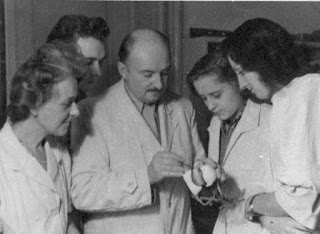
(From the Jakobs Family archives – (c) 2021 G.K. Jakobs)
Perhaps we could say he was more of what we North Americans would now call a denturist. And, while I haven’t researched this topic in great deal, it appears that, in the 1950s, after Germany abolished “Dentists” and required them to take upgrading courses to qualify as Zahnärzte, a number of the “Dentists” immigrated to Canada where they plied their trade illegally. It was only in the 1960s that they were recognized in the various Canadian provinces as “dental mechanics” and, later, as denturists.
All of this does make some sense since Josef’s wife was a “Dentistin” as well and later worked for a business called Thalmann Zahnprothesen (Thalmann Dental Prosthetics). I rather doubt that she went through the upgrading courses mentioned above and likely simply worked as a dental prosthetics technician for Thalmann.
So, Josef’s story to MI5 was more or less accurate although he does seem to have embellished things a little bit, trying to portray himself as more educated than he was. It is always possible that he did study to become a Zahnarzt but never completed his studies, downsizing his ambitions to Dentist instead.
I am once again indebted to Traugott Vitz for passing along a little clue which as clarified at least one aspect of Josef’s career.
Sources
Ancestry – dental directories and address books
ZLB – Zentral- und Landesbibliothek Berlin – Berlin Address books
(Header image “Vintage Dentistry” by Cowtools is licensed under CC BY-NC 2.0)
